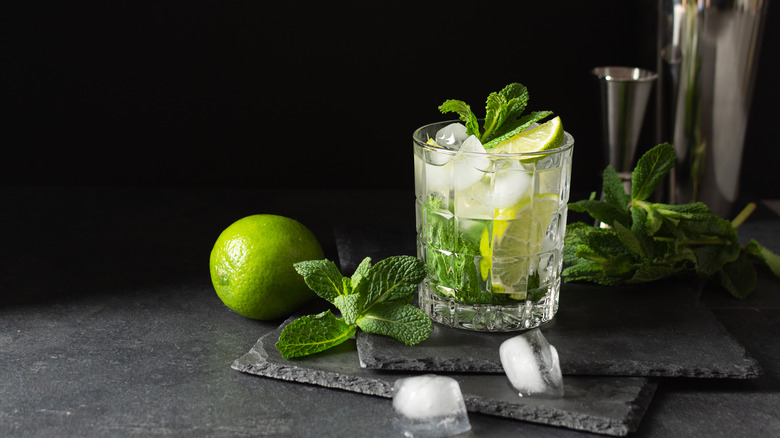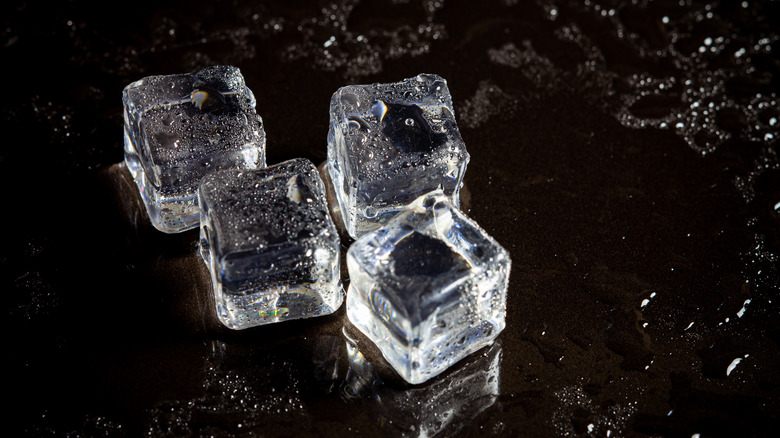The Trick For Preventing Ice From Melting Too Quickly In Your Cocktail
We all know the feeling: You reach for that icy cold cocktail, take a sip, then realize you've left it sitting a few minutes too long. Instead of clinking ice and refreshing flavor, you get a tepid rush of watered-down liquid barely resembling the carefully crafted cocktail you once admired. Ice has a way of doing that, given the fact that ice cools a drink only when it melts, explains SevenFifty Daily. Though it's inevitable that ice will melt in your cocktail, there are ways to slow down the process.
Science may not be foremost in your mind when relaxing with a freshly poured Mai Tai, mojito, or pisco sour, but it's definitely at work inside your glass. Ice melts according to surface area and volume, according to Hunting Waterfalls. The greater the ratio of surface area to volume, the faster it melts. This makes smaller pieces of ice with more exposed surface melt more quickly than larger pieces, notes SevenFifty. So, keep your ice cubes on the large side rather than using those cute little round or half-moon cubes.
Size is one thing, but there's an even better trick for preventing ice from melting prematurely in your cocktail that centers on clarity and composition.
Clear or cloudy cocktail ice
Have you ever noticed the clarity of your ice cubes? Believe it or not, it makes a considerable difference in how fast the cubes melt and how they affect the taste of your drink. Clear or cloudy is the metric by which to measure your ice.
It's more likely that a restaurant or bar will serve drinks with clear ice cubes, because commercial ice makers typically have freezing-cold plates or grids over which the water circulates, explains Memphis Ice. They freeze the water by layers, one at a time, from the inside out. Air bubbles and other impurities get squeezed out, resulting in clean, clear ice cubes. With all the gunk pushed aside, the water itself has more density and takes longer to melt. It also means better tasting drinks as the ice slowly melts into your glass.
Most of us don't have commercial ice machines at home, relying instead on trays or refrigerator ice makers. Take a look at your home-kitchen ice cubes — are the centers cloudy or white? If so, it's likely because ice trays freeze water from the outside in, pushing air bubbles and impurities to the center of the cubes. Ice bubbles can cause evaporation and faster melting, according to Hunting Waterfalls.
An easy solution for home cocktails is to make ice cubes out of purified or distilled water. Boiling tap water could also remove impurities and give you clear, clean ice for cocktails and other cold drinks.

